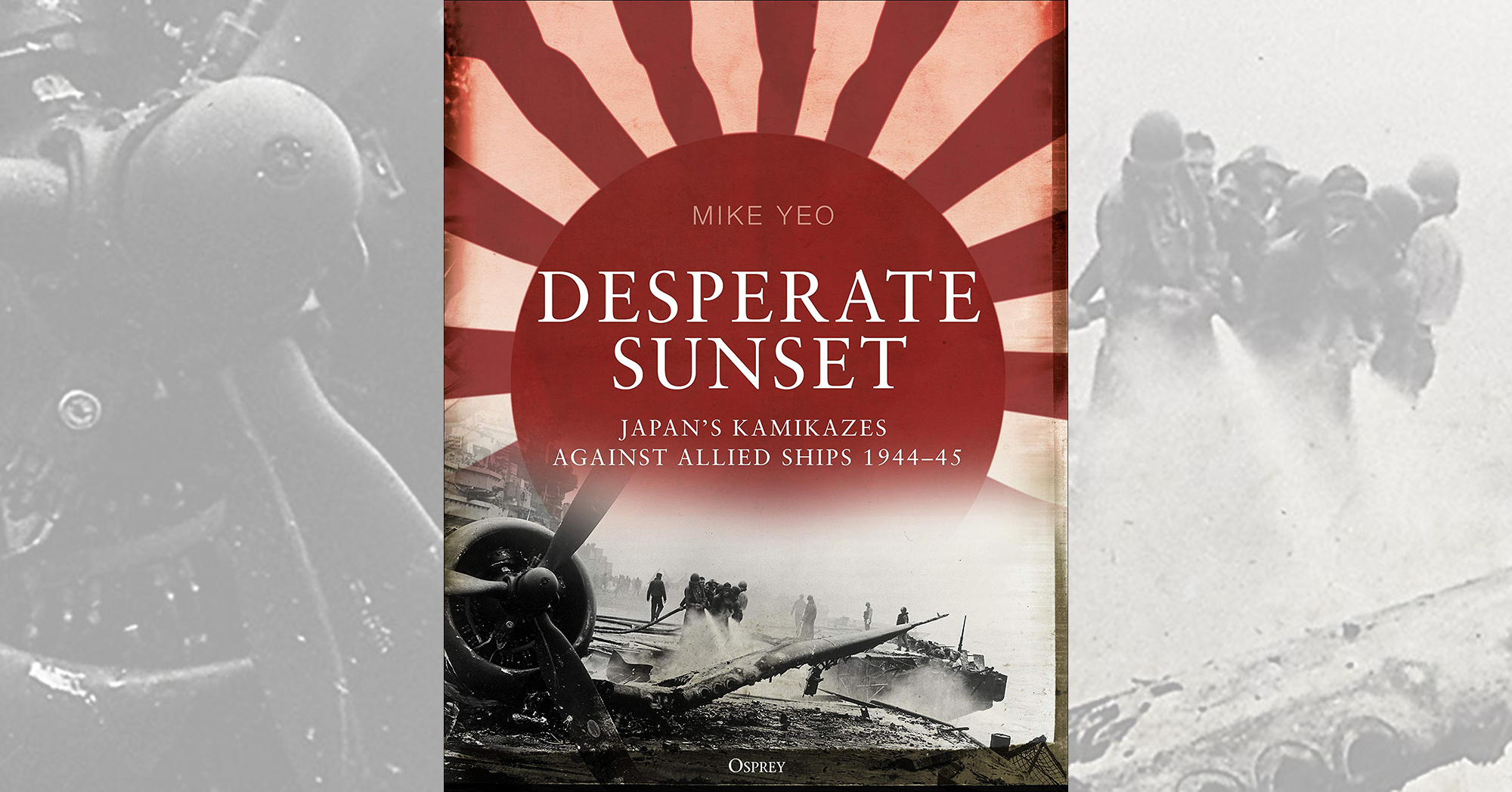Desperate Sunset: Japan’s Kamikazes Against Allied Ships, 1944–45, by Mike Yeo, Osprey Publishing, Oxford, U.K., 2019, $45
By the latter half of 1944 Japan’s military leaders were forced to recognize the increasingly desperate situation faced by their air forces. Its army and navy had lost large numbers of aircraft and, worse, irreplaceable experienced pilots. The Japanese navy had also suffered severe losses among its finest warships and crews—also impossible to replace fast enough to stem the Allied advance. At the same time the strength of the corresponding Allied (especially American) military forces were rapidly expanding, both in size and effectiveness.
Japan’s solution was to organize “special attack” aviation units to mount suicide attacks against enemy warships. Although pilots of stricken Japanese aircraft had previously been known to deliberately crash into Allied ships, only during the last year of the war did Japan create specialized units with the specific intent of carrying out such missions. From October 1944 through war’s end nearly 3,000 Japanese airmen died in kamikaze (“divine wind”) attacks, of which 367 managed to damage or sink their intended targets.
Written by an author from Singapore, Desperate Sunset draws largely on research into Japanese sources hitherto unavailable to Western historians. Mike Yeo presents the history of the kamikazes both from the Allied and Japanese perspectives, as contrasted with most previous works on the subject, written primarily from an Allied point of view. Well written and illustrated, this volume will undoubtedly interest students and historians of the Pacific War.
—Robert Guttman
This post contains affiliate links. If you buy something through our site, we might earn a commission.





